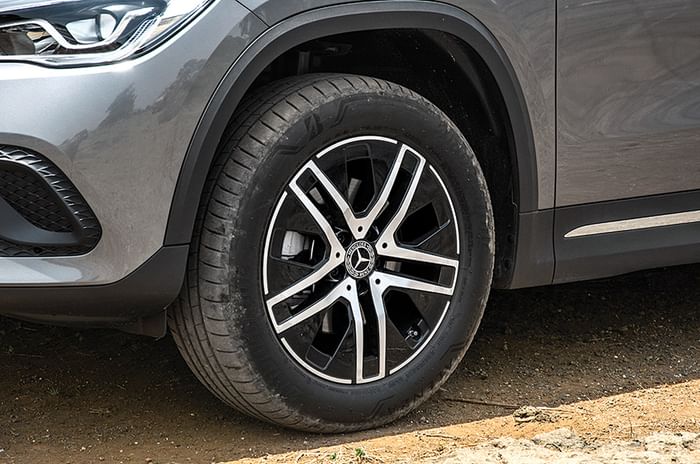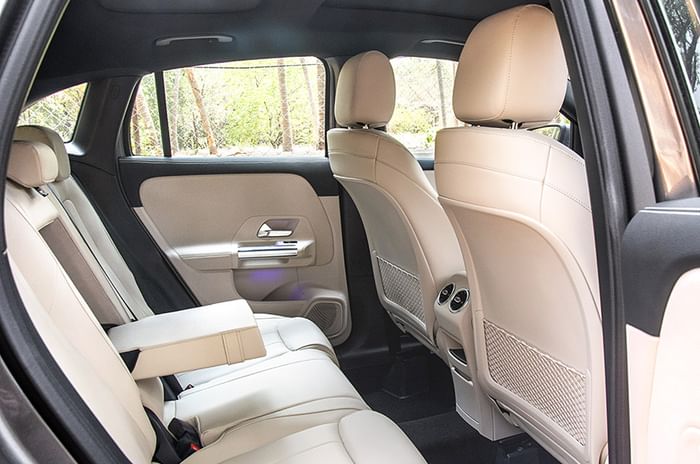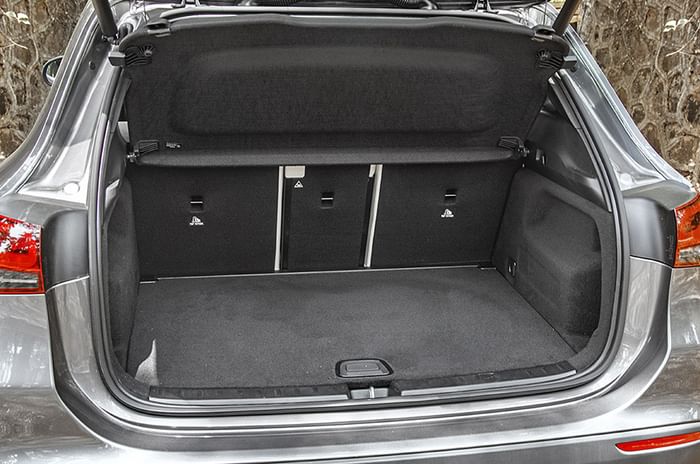Last month we exclusively drove and tested the new Mercedes GLA 220d. That car was powered by a 190hp diesel and came with 4Matic all-wheel drive. While the GLA isn’t on sale yet, also part of its range will be the 200 petrol; this car.
The 1.3 direct-injection turbo-petrol engine under the hood isn’t as powerful as the diesel, putting out 163hp instead of the 190hp of the latter. But what works in its favour is that it’s lighter by around 180kg. This is because there’s no heavy four-wheel-drive system (no long propellor shaft, no heavy differential and no weighty half-shafts), and the petrol engine is also lighter than the diesel.
Cut And Thrust
What also helps is that this petrol engine makes 250Nm from just 1,620rpm. Built in association with turbo specialists Renault and Nissan, the engine idles smoothly and responds nicely to a tap on the throttle. There is a bit of turbo lag initially, in some part due to the gearing, but cross 1,500rpm and it pulls you forward with a thick band of energy that frankly makes it feel like a much larger engine. Power delivery isn’t explosive and the ramp up in power isn’t sudden, but keep your foot in and increasingly more power comes rushing in. In fact, keep the engine in its mid range and there’s enough grunt here to effortlessly build speed and cruise comfortably with what feels like plenty of reserve underfoot.

This makes the GLA 200 quite pleasant to drive in traffic. There is some small amount of hesitation from the seven-speed dual-clutch automatic, and occasionally you get a brief pause, but for the most part the gearbox works well, and that only sweetens the driving experience.
Even straightline performance is more than acceptable. Mercedes claims the GLA 200 takes 8.7sec to get to 100kph from rest, around a second and a half slower than the diesel. And that’s fair. The thing is, the engine doesn’t like being spun fast and the GLA 200 doesn’t feel at home on a wide open highway. Go past 5,000rpm and it feels strained, it makes its peak power at, a relatively low (for a petrol) 5,500rpm, and then even when you rev it and hold your right foot down, progress in this part of the power band isn’t very energetic. So, it’s best to lift your foot off the throttle around 5,500rpm and get the gearbox to shift up to the next gear. To add a dash of efficiency, Merc has even included a mild-hybrid system that winds back otherwise lost power to the battery.
Softer Around The Edges
The GLA 200 petrol may not quite have the punch of the diesel but it rides better. Contributing factors include a lighter engine up front, higher-profile tyres and less unsprung mass at the rear. There’s a suppleness here that’s missing on the diesel, especially over poorly paved roads, and run over some sharper bumps and the GLA 200 doesn’t crash through like the 220d does. Also, the worse the road gets, the more accomplished the GLA 200 feels. The suspension even works silently for the most part.

It also is quite entertaining to drive. The steering is nice and direct and it has a fair amount of grip for a front-wheel-drive car. But just like the diesel, it rolls in corners, so although it is happy at speed and willing to enter corners fast, you have to contend with the body roll. Overall, it will be happier if you dial it down a bit.
Light Is Bright
Where the petrol 200 also impresses is on the inside. Whereas the 220d we tested came in a dark and sporty AMG trim, this petrol gets beige or fawn-coloured lower half, and this, along with the beige seats, does brighten up the cabin considerably. Adding another layer of sophistication is the matte wood trim above the glovebox and on the doorpads. As on the 220d, the tough build of the cabin stands out, while the attention to detail is as good as on Merc cars twice its price. Although there are some ordinary plastics present lower down in the cabin, the quality of stuff like the rotate-to-close vents, screens, buttons and dash are excellent. You get Merc’s new MBUX with the ‘Hey Mercedes’ voice prompt, wireless charging on the centre console, powered front seats with memory, 64 colour ambient lighting and a large sunroof above. Some features that you don’t get include wireless Apple CarPlay and Android Auto, you get only a reversing camera and no parking sensors, and you still need to put your hand in your pocket, fish out the key and unlock the door before you can get in; not nice for a car of this price.

Up front and at the rear there’s sufficient space for even tall passengers, and while the seats are a bit hard and the backrest at the rear is a bit upright, comfort levels are very good. What helps is that you can pull the rear bench forward or slide it back in case you are not carrying luggage. Boot space, however, isn’t great, at a maximum of 435 litres, and that’s with the seat pulled all the way forward and with a space saver spare in the boot.

Should You Buy One?
The new GLA is clearly a big step up on the earlier car. More spacious and comfortable on the inside, beautifully built and well equipped, it has what it takes to be the best compact luxury SUV in its class. Question is, should you go for this petrol, which is likely to cost between Rs 43 and 45 lakh, or the slightly more expensive diesel? The petrol does perform well in the city, the ride is a bit more comfortable and the lighter interiors also give the cabin a lift. So, the GLA 200 has plenty going for it. However, if we had to choose between the petrol and the diesel, it would be the latter we would go for. It is the better rounded package, one that offers stronger performance and delivers it in an effortless manner.






























